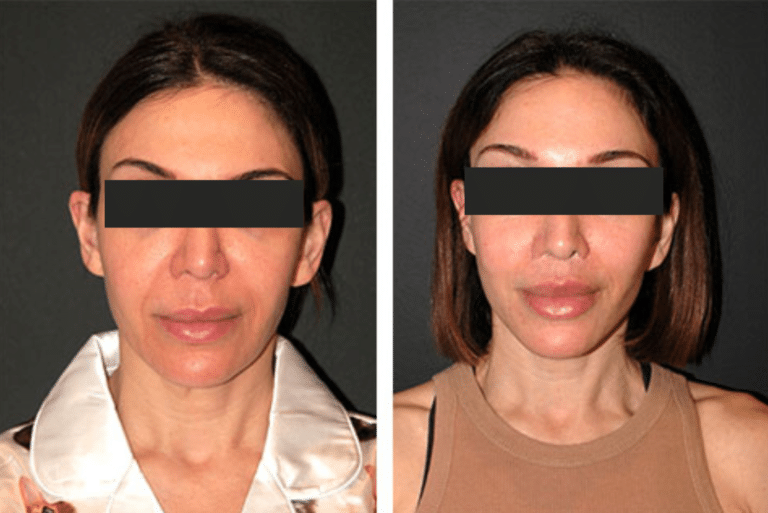The Comprehensive Guide to Facelift Surgery
In the realm of cosmetic enhancements, facelift surgery stands as a time-tested solution for reversing the effects of aging and rejuvenating one’s appearance. Dr. Kanika Singla, a renowned authority in the field of plastic surgery, delves deep into the intricacies of this transformative procedure in her enlightening blog post.
What is Facelift Surgery?
Facelift surgery, also known as rhytidectomy, is a cosmetic procedure aimed at addressing signs of aging in the face and neck. Through meticulous surgical techniques, excess facial skin is removed, underlying tissues are tightened, and muscles are repositioned to restore a more youthful contour. Dr. Singla’s expertise shines as she elucidates the various methods employed in facelift surgery, from traditional techniques to modern advancements such as minimally invasive procedures and the use of advanced technology.

Benefits of Facelift Surgery
The benefits of facelift surgery extend far beyond surface-level improvements. Dr. Singla eloquently elucidates the profound impact that a well-executed procedure can have on a patient’s confidence, self-image, and quality of life. From restoring facial harmony to enhancing facial contours, the transformative effects of a successful facelift resonate on both physical and emotional levels. Moreover, she explores the long-term benefits, including sustained results and a renewed sense of youthfulness that can endure for years to come.
Types of Facelift Procedures
Facelift surgery has evolved significantly over the years, offering a spectrum of options tailored to individual needs and preferences. Here, we delve into the various types of facelift procedures.
1. Traditional Facelift
The traditional facelift remains the gold standard in facial rejuvenation, renowned for its comprehensive approach to addressing multiple signs of aging. This procedure targets sagging skin, deep creases, and laxity in the lower face and neck region. Surgeons meticulously lift and reposition underlying tissues, remove excess skin, and refine facial contours to achieve a more youthful appearance. While it involves longer incisions and a relatively longer recovery period, the results are often dramatic and long-lasting, making it an ideal choice for individuals seeking significant rejuvenation.
2. Mini Facelift
For those seeking subtle yet noticeable improvements with less downtime, the mini facelift offers an appealing solution. Also known as a “weekend facelift” or “limited-incision facelift,” this procedure targets mild to moderate signs of aging in the lower face and neck. By utilizing smaller incisions and focusing on specific areas of concern, such as the jowls and jawline, surgeons can achieve natural-looking results with reduced scarring and a quicker recovery. The mini facelift is particularly suitable for younger patients or those with minimal facial laxity who desire a refreshed appearance without the need for extensive surgery.
3. Neck Lift
While often performed in conjunction with a facelift, the neck lift can also be a standalone procedure to address aging concerns in the neck region. As we age, the neck may develop excess fat deposits, loose skin, and prominent neck bands, detracting from overall facial harmony. A neck lift targets these specific concerns, tightening the neck muscles, removing excess fat, and trimming sagging skin to create a more defined and youthful neck contour. Whether performed alone or in combination with other facial procedures, such as a facelift or liposuction, the neck lift offers transformative results, restoring confidence and rejuvenating the overall facial profile.
Preoperative Instructions for facelift surgery
Preoperative Instructions for Facelift Surgery:
- Follow fasting guidelines.
- Discontinue certain medications.
- Arrange transportation.
- Quit smoking.
- Prepare recovery space.
- Follow skincare regimen.
- Stay hydrated.
- Avoid alcohol and strenuous activities.
- Discuss concerns with surgeon.
- Follow surgeon’s instructions diligently.
The Facelift Surgery Process:
Anesthesia Options:
- General anesthesia: Induces unconsciousness for the duration of the procedure, ensuring the patient feels no pain or discomfort.
- Local anesthesia with sedation: Numbs the treatment area while keeping the patient relaxed and drowsy.
- Your surgeon will discuss the most suitable option based on your medical history, preferences, and the extent of the procedure.
Incision Techniques:
- Traditional facelift: Typically involves incisions along the hairline, extending around the ears and possibly into the scalp. This allows for comprehensive access to underlying tissues for repositioning and tightening.
- Mini facelift: Utilizes shorter incisions, often limited to the front of the ears or along the hairline, targeting specific areas of concern such as the jowls and jawline.
- Endoscopic facelift: Utilizes small incisions and a tiny camera (endoscope) to visualize and adjust underlying tissues, resulting in minimal scarring and a quicker recovery.
Recovery Timeline:
- Immediately post-surgery: Patients may experience swelling, bruising, and discomfort, which can be managed with prescribed medication and cold compresses.
- First week: Most patients can resume light activities, but should avoid strenuous exercise and follow post-operative care instructions diligently.
- Second week: Swelling and bruising gradually subside, allowing patients to return to more normal activities while continuing to avoid heavy lifting and strenuous movements.
- Subsequent weeks: Final results begin to emerge as swelling continues to diminish, and incision lines fade. Patients should continue to follow their surgeon’s guidance for optimal healing and long-term results.
- Full recovery: typically achieved within several weeks to months, with final results becoming apparent as swelling resolves and tissues settle into their new position.
Postoperative Care
Postoperative care following facelift surgery involves managing swelling and bruising with prescribed medications and cold compresses. Patients should avoid strenuous activities, heavy lifting, and direct sun exposure to optimize healing. Expected results include a rejuvenated appearance, with final outcomes becoming apparent after several weeks to months. Follow-up visits with the surgeon ensure proper healing and long-term satisfaction.
Summary:
In this article, we have discussed the ins and outs of facelift surgery, including the different types of procedures, preoperative preparation, the surgery process, and postoperative care. Understanding these aspects can help individuals make informed decisions about whether facelift surgery is right for them.
FAQ
Most frequent questions and answers
- Facelift surgery can provide long-lasting results, but it doesn’t stop the aging process entirely. While it effectively reverses signs of aging, natural aging and lifestyle factors can gradually affect the results over time.
- Potential risks include infection, bleeding, hematoma, nerve injury, scarring, and asymmetry. Rare complications may include skin loss, hairline changes, or adverse reactions to anesthesia. Choosing a qualified surgeon and following preoperative and postoperative instructions can minimize these risks.
- While initial improvements are visible shortly after surgery, final results emerge gradually as swelling subsides and tissues settle into their new position. It typically takes several weeks to months to see the full extent of the rejuvenation, with results lasting for many years with proper care.












Leave a comment